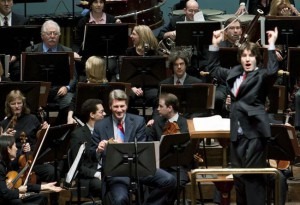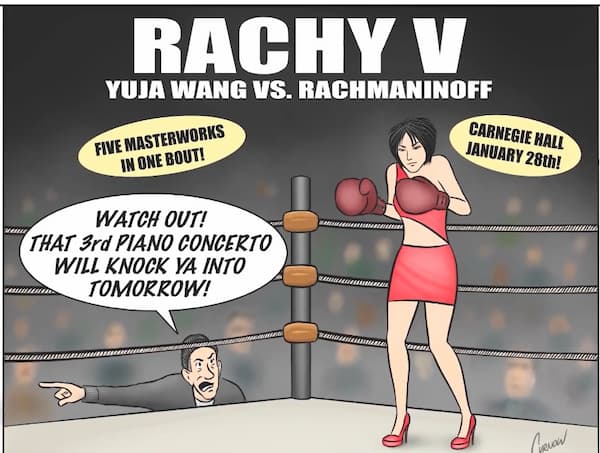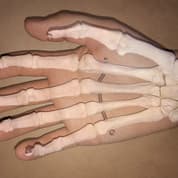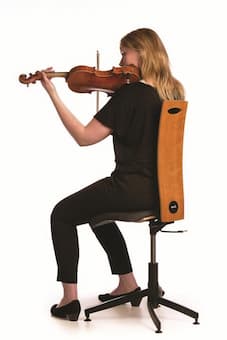![Minnesota-Orchestra-06[Greg-Helgeson]](https://interlude-cdn-blob-prod.azureedge.net/interlude-blob-storage-prod/2012/10/Minnesota-Orchestra-06Greg-Helgeson-300x199.jpg)
Minnesota Orchestra
credit: http://www.bach-cantatas.com/
Concertgoers love to conjure backstage mysteries. What enables musicians to walk onstage with such confidence and dazzle audiences with their prodigious talents? I have always enjoyed taking groups of patrons to the inner sanctum for them to see the interior workings of a symphony orchestra. Usually my tour group gasps when they walk onto the stage and view the thousands of seats in the hall from the musician’s vantage point and the closely jammed chairs and stands onstage.
We walk down the narrow hallways behind the stage. There is little space with one hundred or so musicians toting instruments and warming up, all in a din of cacophony. The corridors are filled with big black trunks that we call “coffins.” These safely transport the instruments when we travel— there are enormous triangular bass trunks that are only moveable on a dolly by two stage managers who seem to careen up and down the hallway. There is a harp shaped trunk, huge square trunks with slots for each violin, large rectangular trunks that each house two cellos in their cases and boxes for numerous types of percussion instruments and the sheet music — each instrument part nestled in matching folders, in strict sequence. Wardrobe trunks — two for the men and two for the women, are filled to overflowing with tails and cummerbunds, gowns and black shoes, bowties and stockings, garment bags and hangers.
In Orchestra Hall there are large lockers that house the cellos, many of them personalized with among other things: family photos, grooming accessories, extra strings, clothing and shoes, stickers from European tours, diapers (there are many young mothers in the group,) and chocolate of course — a virtual home away from home.
The orchestra lounge — a long rectangular room is filled to overflowing with a few tables, garish orange chairs lining the walls, one telephone, a TV for those not-to-be- missed baseball games, and a bulletin board. Musicians post upcoming solo concert fliers, information about popular new restaurants, photos from tours and the latest viola joke. (How is lightning like a violist’s fingers? Neither one strikes in the same place twice.) There is chatter, an always-ongoing chess game, reading, last minute marking of the music, munching on take-out, as there is never enough time for a meal, texting and even the occasional napper.
The maestro’s headquarters is shielded by the assistant’s desk. He carefully screens any potential pesky visitors. The maestro’s suite is lushly carpeted and comfortably furnished with a sofa, coffee table and chairs, a large desk, which can accommodate enormous musical scores, bookshelves of CD’s and a private alcove complete with shower, closet, and small appliances.

Minnesota Orchestra
credit: http://minnesota.publicradio.org/
Preparation is key before any orchestra service. The conductor scrutinizes the score perhaps waving his arms and whistling. Some musicians engage in their practice and warm up at home which includes some mental preparation and focusing; others head strait to the stage prior to the concerts. Musicians start to arrive two hours early to a concert, while the stragglers race through the stage door with no time to spare. But no one is ever late. Sneaking onstage when the performance has begun is not easily overlooked!
A signal is given and a hush descends. The oboe “A” is played exactly one minute before the rehearsal for tuning. The conductor enters, some with pomp others with friendly slaps on the backs of the violin section members.
Visiting conductors are nonplussed as they stand on the podium to face the formidable one hundred musicians. We size up the conductor in one upbeat. Luckily, the maestro has his back to the audience most of the time. Patrons are spared the histrionic expressions and scowls of many a demanding conductor. Little does the audience know of any errors on their part. Nothing the conductor does is audible. I remember notable evenings when a conductor has forgotten to bring the orchestra in after Emanuel Ax played the Brahms Piano Concerto cadenza, and a conductor who lost his place in the score who conducted in two when it was supposed to be in three, or when a conductor forgot the last chord of Rachmaninoff’s Symphony #3. When a particularly undecipherable cue comes from an inadequate conductor, an instrumentalist will save the concert coming in confidently barely averting a train wreck. We euphemistically call it our “Golden Baton Award.”
The after concert rituals are legend. Typically, audience members like to fawn over the soloist and conductor. As colleagues we feel that we too must say something afterward. Sometimes we are at a loss for words. We have worked out several short phrases for such situations —
“I have never heard it quite like that”; or “My goodness how you played!” Or “That was quite a performance.”
“You did it again!” and “Your playing exceeded my expectations,” work quite well.
Joking aside, what most audience members are unaware of are the long practice sessions in private and the concentrated rehearsals as a group. Every note and nuance is intensely scrutinized. Perfected. The repetition is astounding; the discipline amazing. No musician ever rests on his or her laurels. As Olympic athletes, we work towards a dream — both technical perfection and breathtaking artistry. Perseverance, confidence and drive are as important as talent. How one gets to Carnegie Hall is modestly calculated at 10,000 hours of practice. And like athletes, we train and we train and we never let up for fear of losing our edge, or being the least bit out of shape.
Our professional careers are extraordinarily long — oftentimes decades of music making. Every week there are the challenges of music we are learning for the first time and works we have played countless times. Our dedication is uncompromising and when the performance is great there is nothing like it.
Short videos of Minnesota Orchestra’s musicians sharing practice tips at the backstage.
Principal Percussionist Brian Mount
Associate Principal Horn Player Herbert Winslow
Violinist Peter McGuire




